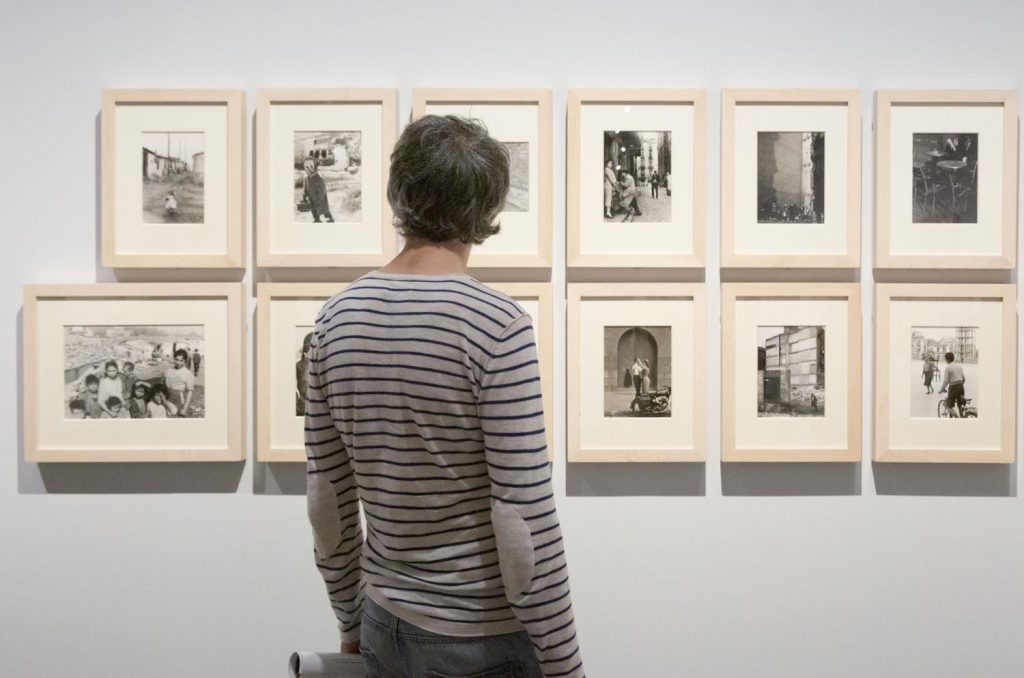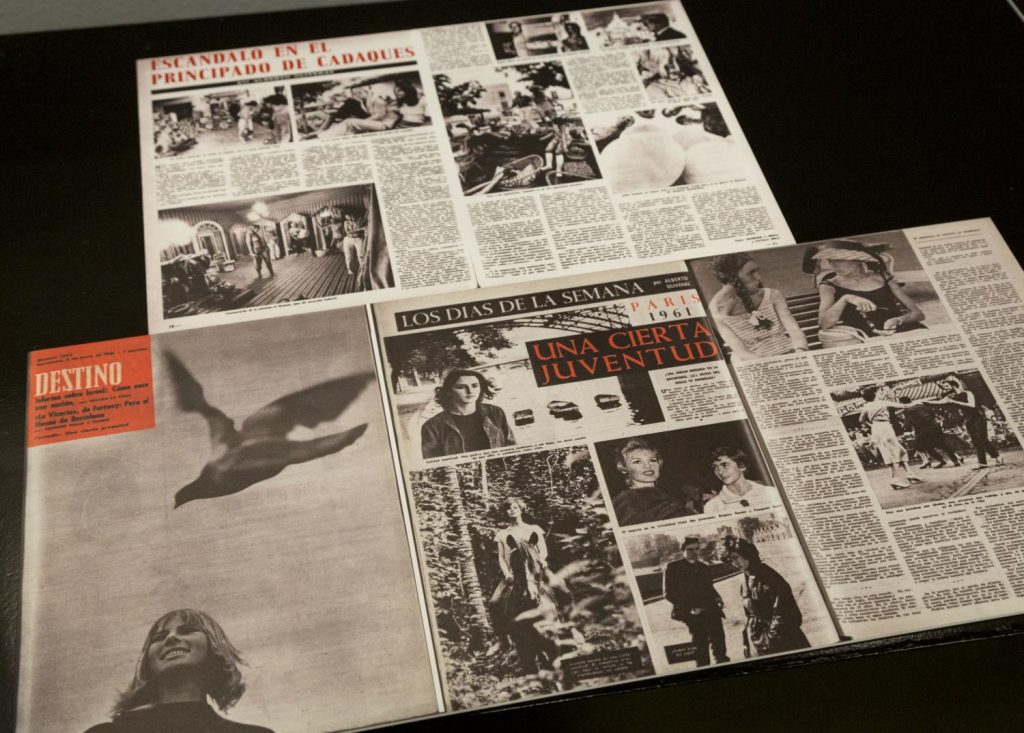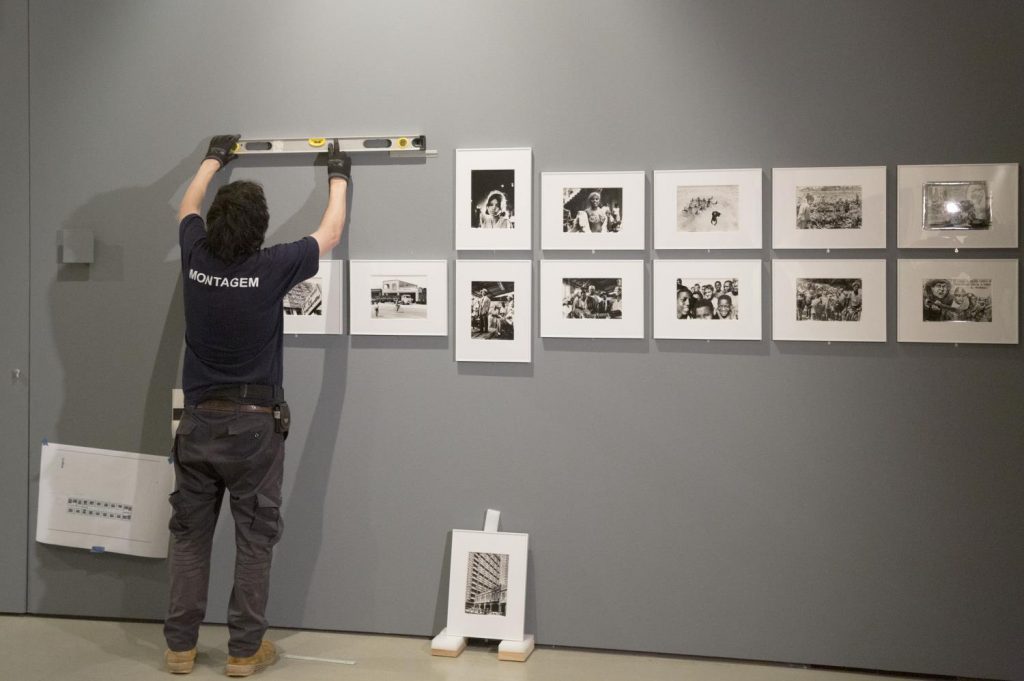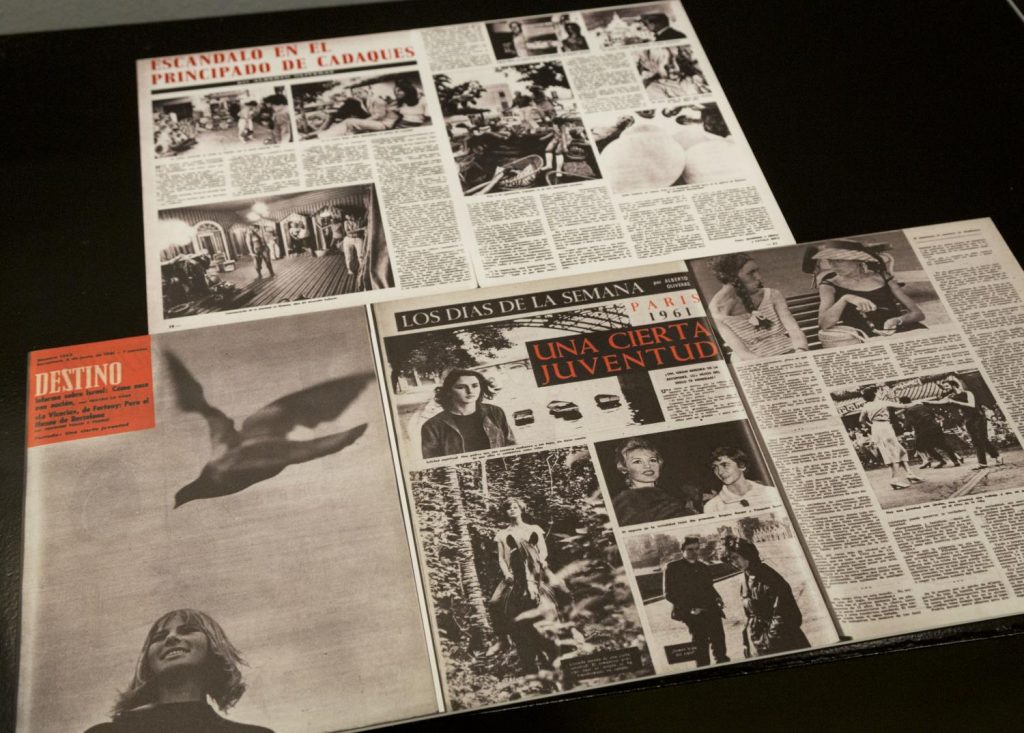Cristina Zelich
After accepting the commission to curate a major retrospective exhibition about Oriol Maspons based on the collection deposited in the Museu Nacional d’Art de Catalunya by the author himself, a collection made up of around 7,000 photographs on paper, I decided to structure the exhibition so that it would reflect as faithfully as possible his varied photographic production.

The structure of the exhibition: amateur Maspons and professional Maspons
From the outset it was clear to me that the exhibition should count on two major fields that would cover, on the one hand, his practice as an amateur, and on the other hand, his professional practice.
It was important to establish a chronology, to investigate when and how Maspons became interested in photography and what led him to decide that he wanted to dedicate himself to it professionally.
The abundant documentary material, randomly gathered together without any order in 40 boxes which were the property of his son Álex Maspons, constituted the starting point of my research. With the help of the staff of the museum, I started separating and chronologically ordering the articles, interviews, magazines, books, diaries, letters, typed texts, posters, professional membership cards, etc. In addition to the documentary material we also found photographs from his first period as an amateur and also an illustrated academic work with images and a personal photographic album carried out between 1946 and 1949.
I carefully read his articles published in the magazine Arte Fotográfico, in the magazine AFAL and in the Boletín de la AgrupaciónFotográfica de Cataluña. I also read all the interviews that I found that had been published in specialized and general interest magazines, I looked for live interviews that had been carried out for television and other audiovisual media, and finally I read texts that had been written about him by Josep Maria Casademont, Lluis Permanyer, Alexandre Ciri Pellicer and David Balsells, former conservator of photography of the Museu Nacional, all of them being people who either knew him well or had worked with him.
The useful photography: the works of Maspons in context
Reading all these materials allowed me to understand the fact that for Maspons the photography that he was interested in, above all in his extensive and diverse professional practice which began in 1957 together with Julio Ubiña, was what he himself called the useful photography, whose ultimate aim was the printed page. That is to say, the photography applied to reportage, advertising, fashion or publishing illustration.
It seemed evident to me that the exhibition couldn’t be limited to exhibiting the most successful, personal, flashy or novel photographs. It was important to contextualize his works, both the ones he took as an amateur – to determine the framework in which they were produced and the influences received – as well as the ones produced when commissioned by different types of clients in the development of his professional practice. As such, the next step was to locate the final product of his photographs: covers of books, record covers, advertisements, reportages for illustrated magazines, and illustrated books with his photographs. This meant hours and hours looking through the newspaper archive, checking the Gaceta Ilustrada, Destino, Triunfo, Interviú, Cuadernos de Arquitectura and Serra d’Or, amongst others. But also visits to the Mercat de Sant Antoni, to the second-hand records and books shops, or consulting in the net of webpages such as Todo Colección or Iberlibro.

It was only from this point on that I began to delve into the digitizations of the 7,000 photographs deposited in the National Museum, in order to reconstruct the published reports, the sets of still photos for different films, the photographs used for advertising or those that had been used to illustrate books.
Once the images had been identified, I dedicated myself, always with the help of the museum staff, towards looking at and selecting the originals for the exhibition.
Setting up the exhibition

After selecting the exhibition material, both the photographs as well as the documents of all kinds, I began working on setting it up, that is to say, on how to exhibit this material in an intelligible form, on how to make the contextualized work of Maspons accessible to the viewer. During this stage of the process, the close collaboration with Santiago de León, who was in charge of the museographic design, and also with La Japonesa, the designers who produced the graphics, was fundamental.

It is evident that an exhibition of this magnitude is only possible by working as a team. And in this case many people from inside and outside the museum have taken part, to whom I am very grateful. It is impossible to mention all of them, but I would like to name two of them without whose support and professionalism it would have been impossible for me to bring this project to fruition: Roser Cambray, who has been my right hand in all the research and selection of the material, and Ana Izquierdo, who was responsible for coordinating the exhibition. And of course, Pepe Serra, director of the museum, who trusted in me to curate this great retrospective about Oriol Maspons.

Related links
Topic guide “Oriol Maspons, useful photography / 1949-1995”
Oriol Maspons, the useful photography / 1949-1995









